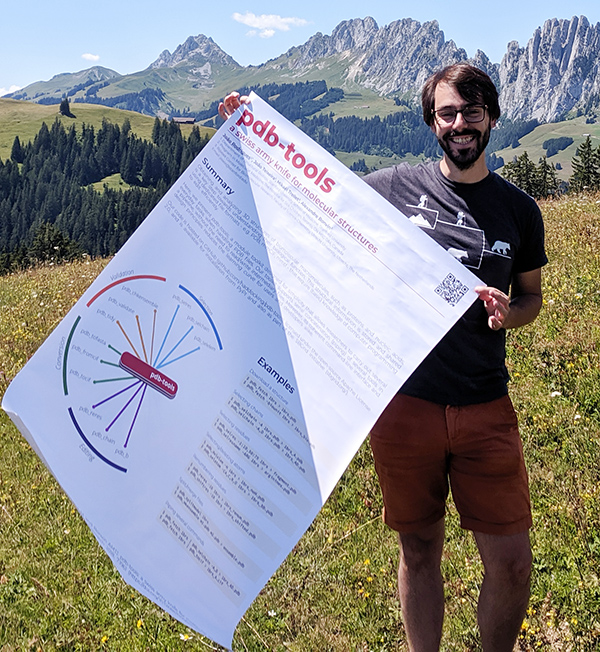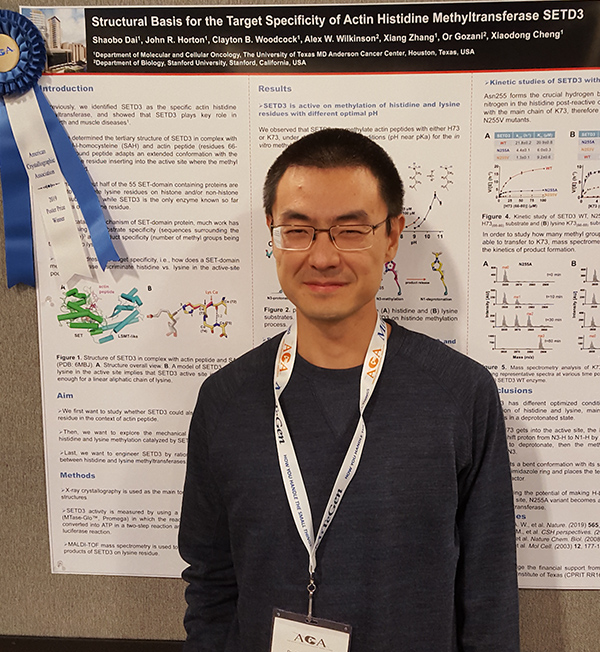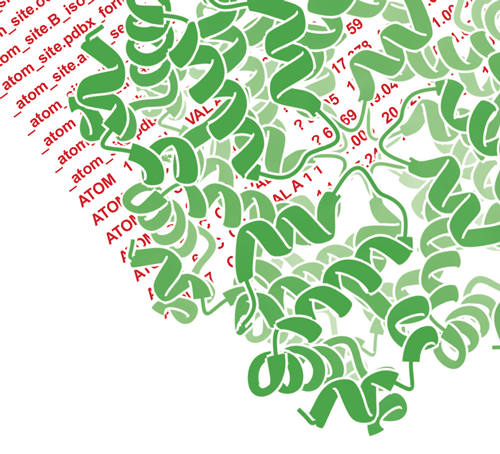Outreach and Education 
Illustrate PDB Structures

Complex of tRNA with EF-Tu (PDB structure 1ttt; see Molecule of the Month article on Elongation Factors). Image created using Illustrate.
Over the years, Molecule of the Month illustrations have become easily recognizable thanks to their non-photorealistic rendering, flat pastel colors, and black outlines.
Illustrate is described in:
David S. Goodsell, Ludovic Autin, and Arthur J. Olson Illustrate: Software for Biomolecular Illustration, Structure (2019) doi: 10.1016/j.str.2019.08.011
Poster Prizes Awarded at ISMB and ACA
At this year's meeting of the Intelligent Systems for Molecular Biology Conference (ISMB)/European Conference on Computational Biology, the award went to João Rodrigues for
pdb-tools: a dependency-free cross-platform swiss army knife for PDB files for Learning from the ligand: improving binding affinity prediction using molecular descriptors. João Rodrigues (Stanford University), João Teixeira (University of Toronto), Mikael Trellet (Utrecht University), and Alexandre Bonvin (Utrecht University)
The pdb-tools are a collection of Python scripts for working with molecular structure data in the Protein Data Bank (PDB) format. The tools allow users to easily and efficiently edit and validate PDB files as well as convert coordinate data to and from the now-standard mmCIF format. Moreover, their simple and consistent command-line interface makes them particularly adequate for non-expert users. All tools are implemented in Python, without external dependencies, and are freely available under the open-source Apache License at https://github.com/haddocking/pdb-tools and on PyPI.
Many thanks to Chair Arjun Krishnan (Michigan State University), Co-Chairs Casey Greene (University of Pennsylvania) and Virginie Uhlmann (EMBL-EBI), and Steven Leard (ISMB).
At this year's American Crystallographic Association's Annual Meeting, the RCSB PDB Poster Prize award went to Shaobo Dai for
Structural Basis for the Target Specificity of Actin Histidine Methyltransferase SETD3.Shaobo Dai, John R. Horton, Clayton B. Woodcock (The University of Texas MD Anderson Cancer Center), Alex W. Wilkinson (Stanford University), Xian Zhang, Or Gozani, Xiaodong Cheng (The University of Texas MD Anderson Cancer Center)
Many thanks to Poster Prize Chairs Louise Dawe (Wilfrid Laurier University) and David R. Rose (University of Waterloo) and the judges.
Beginner’s Guide to PDB Structures and the PDBx/mmCIF Format
The constantly-growing PDB is a reflection of the research that is happening in laboratories across the world. This can make it both exciting and challenging to use the database in research and education.
What does PDBx mean? Where are all the hydrogen atoms in this file? Should I care about the R-factor? Why are there 20 overlapped structures in my file? These questions and many others are explored in PDB-101's Guide to Understanding PDB Data. This resource was created to help users navigate through the contents of the archive without having a detailed background in structural biology. Topics cover biological assemblies, molecular graphics programs, R-value and R-free, and more.
A Beginner’s Guide to PDB Structures and the PDBx/mmCIF Format has been added to this collection. The PDBx/mmCIF file format and data dictionary is the basis of wwPDB data deposition, annotation, and archiving of PDB data from all supported experimental methods. And since July 1st, submission of PDBx/mmCIF format files for crystallographic depositions to the PDB is mandatory.


